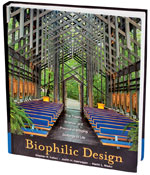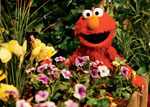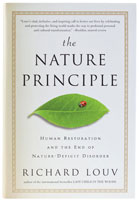sierraclub.org - sierra magazine - march/april 2012 - mixed media: brave new nature
Brave New Nature | Danny DeVito Speaks for the Trees
BRAVE NEW NATURE
Getting closer to the natural world in the electronic age
These days, the future is often portrayed as a postapocalyptic dystopia, stripped of nature, filled with human brutality. Or it's a cold, technological future. But imagine a newer world. What would our days be like if they were as immersed in nature as they are in technology? What if we not only conserved nature but also created it where we live, work, learn, and play? What if we achieved energy efficiency and also produced human energy (mental and physical health, creativity, and productivity) by plugging in to nature? —Richard Louv
 Home and Garden
Home and Garden
In Bringing Nature Home (Timber Press, 2007), Douglas W. Tallamy makes the case that everyday gardeners are the key to reviving urban and even global biodiversity. He's also campaigning to create a new kind of wildlife habitat corridor, which he calls Homegrown National Park, made up of tens of thousands of miles of backyards. Roll up your sleeves and create your own eco-paradise with Natural Remodeling for the Not-So-Green House (Lark Books, 2006) by Carol Venolia and Kelly Lerner.
Nature Networking
 Nearly 100 regional, state, and provincial campaigns in North America are working to get children outdoors. Children and Nature Network recommends blogs, films, and books. Among them: such seminal works as Robert Michael Pyle's The Thunder Tree (Oregon State University Press, 2011—a new edition for which I wrote the foreword), which warns of the "extinction of experience," and Joseph Cornell's Sharing Nature With Children (Dawn Publications, 1998). For documentaries about nature-deficit disorder, watch Camilla Rockwell's Mother Nature's Child (Fuzzy Slippers Productions, 2010) and Meg Merrill and Tonje Hessen Schei's Play Again (Ground Productions, 2010).
Nearly 100 regional, state, and provincial campaigns in North America are working to get children outdoors. Children and Nature Network recommends blogs, films, and books. Among them: such seminal works as Robert Michael Pyle's The Thunder Tree (Oregon State University Press, 2011—a new edition for which I wrote the foreword), which warns of the "extinction of experience," and Joseph Cornell's Sharing Nature With Children (Dawn Publications, 1998). For documentaries about nature-deficit disorder, watch Camilla Rockwell's Mother Nature's Child (Fuzzy Slippers Productions, 2010) and Meg Merrill and Tonje Hessen Schei's Play Again (Ground Productions, 2010).
Thriving Cities
 As of 2008, more people live in cities than in the countryside. That can mean either a decline in everyday human contact with nature or the creation of cities that incorporate the natural world. Timothy Beatley's documentary The Nature of Cities (Throughline Productions, 2009) gets nature right, and his books Biophilic Cities (Island Press, 2010) and Green Urbanism (Island Press, 2000) show how cities can be engines of biodiversity. Notable anthologies include Biophilic Design (Wiley, 2008), which shows how architects can design with nature to increase human productivity, and Making Healthy Places (Island Press, 2011), which looks at how the built environment can be designed to lower health costs and improve our quality of life.
As of 2008, more people live in cities than in the countryside. That can mean either a decline in everyday human contact with nature or the creation of cities that incorporate the natural world. Timothy Beatley's documentary The Nature of Cities (Throughline Productions, 2009) gets nature right, and his books Biophilic Cities (Island Press, 2010) and Green Urbanism (Island Press, 2000) show how cities can be engines of biodiversity. Notable anthologies include Biophilic Design (Wiley, 2008), which shows how architects can design with nature to increase human productivity, and Making Healthy Places (Island Press, 2011), which looks at how the built environment can be designed to lower health costs and improve our quality of life.
 Educating Educators
Educating Educators
School districts are flooding students with computers and other Internet-connected gadgets. But there's growing evidence that getting kids outside aids learning and creativity too, and can reduce symptoms of attention deficit disorder. Herbert W. Broda's Moving the Classroom Outdoors (Stenhouse, 2011) shows how to create learning habitats through nature. The anthology Ecological Literacy (Sierra Club Books, 2005) and David Sobel's Place-Based Education (Orion, 2004) should be required reading for every education policymaker. Meanwhile, here's one indicator of cultural and educational change: In 2009, for the first time in 40 years, Sesame Street introduced gardening and other forms of nearby nature to its urban set.
Adapted From Richard Louv's The Nature Principle: Human Restoration and the End of Nature-Deficit Disorder (Algonquin Books of Chapel Hill, 2011):
 The natural world's benefits to our cognition and health will be irrelevant if we continue to destroy the nature around us. However, that destruction is assured without a human reconnection to nature.
The natural world's benefits to our cognition and health will be irrelevant if we continue to destroy the nature around us. However, that destruction is assured without a human reconnection to nature.
The future will belong to the nature-smart—those individuals, families, businesses, and political leaders who develop a deeper understanding of nature, and who balance the virtual with the real.
As a species, we are most animated when our days and nights on Earth are touched by the natural world. We can find immeasurable joy in the birth of a child, a great work of art, or falling in love. But all of life is rooted in nature, and a separation from that wider world desensitizes and diminishes our bodies and spirits. Reconnecting to nature, nearby and far, opens new doors to health, creativity, and wonder.
This is why the Nature Principle is about conservation, but also about restoring nature while we restore ourselves; about creating new natural habitats where they once were or never were, in our homes, workplaces, schools, neighborhoods, cities, suburbs, and farms. It's about the power of living in nature—not with it, but in it.
Richard Louv kicked off a national conversation about the disconnection between children and nature with his 2005 book, Last Child in the Woods: Saving Our Children From Nature-Deficit Disorder (Algonquin Books of Chapel Hill).
Books: Lori Eanes (4); Elmo: courtesy of Sesame Workshop/Richard Termine